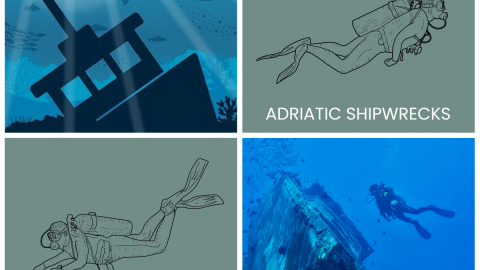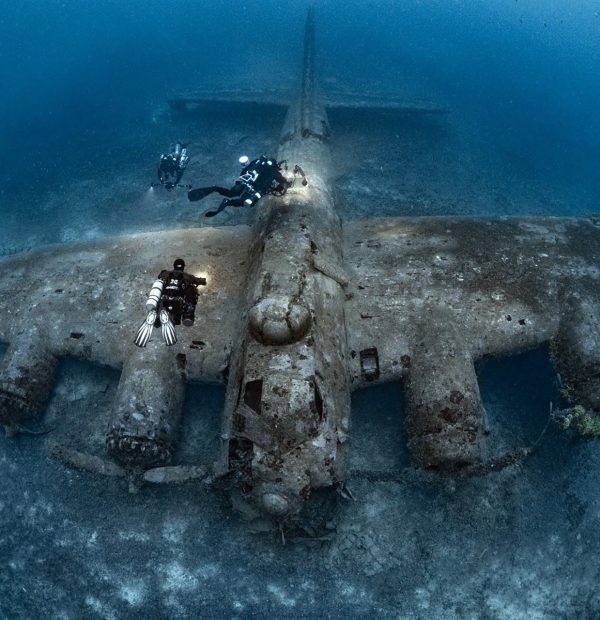Monday, 22 April 2024
Menu

The released video shows how the recovered artefacts, including more than a hundred sabres with intricately etched sun and moon patterns, were examined by specialists at Historic England’s Research Facility in Portsmouth. The video also shows the various techniques that are used to help researchers analyse such discoveries.

Owned by the Dutch East India Company, the Rooswijk ship sank in 1740 in the treacherous waters around Goodwin Sands. The vessel had set sail from Texel in the Netherlands and was heading to the port of Batavia (today’s Jakarta). Along the way, the ship encountered a violent storm, which eventually resulted in its sinking along with 237 crew members, trade goods and personal belongings.
The new artifacts were recovered during two excavation campaigns carried out in 2017-2018 in collaboration with the Cultural Heritage Agency of the Netherlands. The goal of these was to recover artefacts located on the Rooswijk shipwreck, which is currently under threat due to its location.
A total of around 2,500 artefacts were recovered from the wreck. Using a variety of survey techniques, Historic England specialists recovered and preserved a number of objects, including etched sabre blades, carved knife handles, silver coins, thimbles, combs and much more. The project is financed and led by the Cultural Heritage Agency of the Netherlands in close collaboration with project partner Historic England and contractor MSDS Marine.
It has been fascinating to slowly reveal the many secrets hidden for hundreds of years within the objects found at the Rooswijk wreck site. We are delighted to share this new video about the artefacts and to highlight the incredible work that has been carried out by our specialists to preserve these items for future generations to enjoy – said Angela Middleton, Senior Archaeological Conservator, Historic England.


More than a hundred sabres have been excavated from the wreck, whose blades have been etched on both sides. Some of them have a pattern of the sun, moon, stars and a snake. The etchings were made using acid, as this was a cheaper alternative to engraving. The patterns etched on the blades resemble those found on similar weapons in Europe, Africa and the Middle East.
The Rooswijk wreck lies at approximately 25 metres of depth in a highly dynamic environment. It takes a lot of effort to excavate a shipwreck under these conditions. The conservation, however, has proven to be just as challenging. The conservators have done an amazing job. Through mini excavations in the lab, we now know so much more about the ship, the people on board and their trade. I am happy the objects and the exciting stories they behold are now ready to be shown to the world – said Martijn Manders, Coordinator Maritime Heritage Overseas and Rooswijk Project Lead, Cultural Heritage Agency of the Netherlands.
A total of 1,846 coins were recovered from the wreck. One of the techniques that was used during the survey was X-ray radiography. This technique involves taking pictures of the interior of the object and allowed to see what was hidden in the concretions of the marine sediments. By doing so, the researchers revealed silver coins, knife blades and tool handles.

Crates containing trade goods, such as sabre blades, were recovered from Rooswijk, but were covered with thick layers of concretion from the seabed. Specialists painstakingly removed it using several different techniques, including a tool known as the ‘Air Scribe‘, which eliminates small layers of concretion from around the blades.
Historic wrecks contain a wealth of information that can inform about our maritime past but can be at risk of erosion. It is important that we document and research, where possible, the maritime heritage that historic wrecks reveal. That way we will not lose the stories tied up in these amazing artefacts – said Duncan Wilson, Chief Executive, Historic England.
Coins can be classified into two categories: official and private. Official coins were owned by the company and were mainly used for trade and exchange. Private coins were probably owned by crew members who intended to profit from the voyage. The smuggling of silver coins was officially forbidden by the Dutch East India Company, but it seems to have been a common practice by many people on the Rooswijk ship. It is possible that up to half of the silver on board the vessel was illegal.










Welcome to DIVERS24.COM, your daily source of scuba news, freediving, scuba diving information, and equipment reviews. Our comprehensive coverage of the dive industry from A to Z provides you with all the latest scuba news, training updates, underwater photography tips, and everything else related to scuba diving. Whether you’re a beginner or an experienced diver looking for more knowledge about scuba gear or techniques – we’ve got it covered! With our in-depth articles written by experienced divers who have been there and done that, you are sure to find exactly what you need here at Divers24.com. Dive into scuba news today!
Underwater Media Sp. z o.o.
Szafarnia 11/F8,
80-755 Gdansk, Poland
Welcome to DIVERS24.COM, your daily source of scuba news, freediving, and scuba diving information. Sign in for a weekly news update and discount coupons for dive gear and apparel.
@2023 - underwatermedia.pl. All Right Reserved. Designed and Developed by Tworzenie stron internetowych Gdansk

The Divers24 portal is currently the largest online medium treating diving in Poland. Since 2010 we have been providing interesting and important information from Poland and around the world on all forms of diving and related activities.
Contact us: info@divers24.com